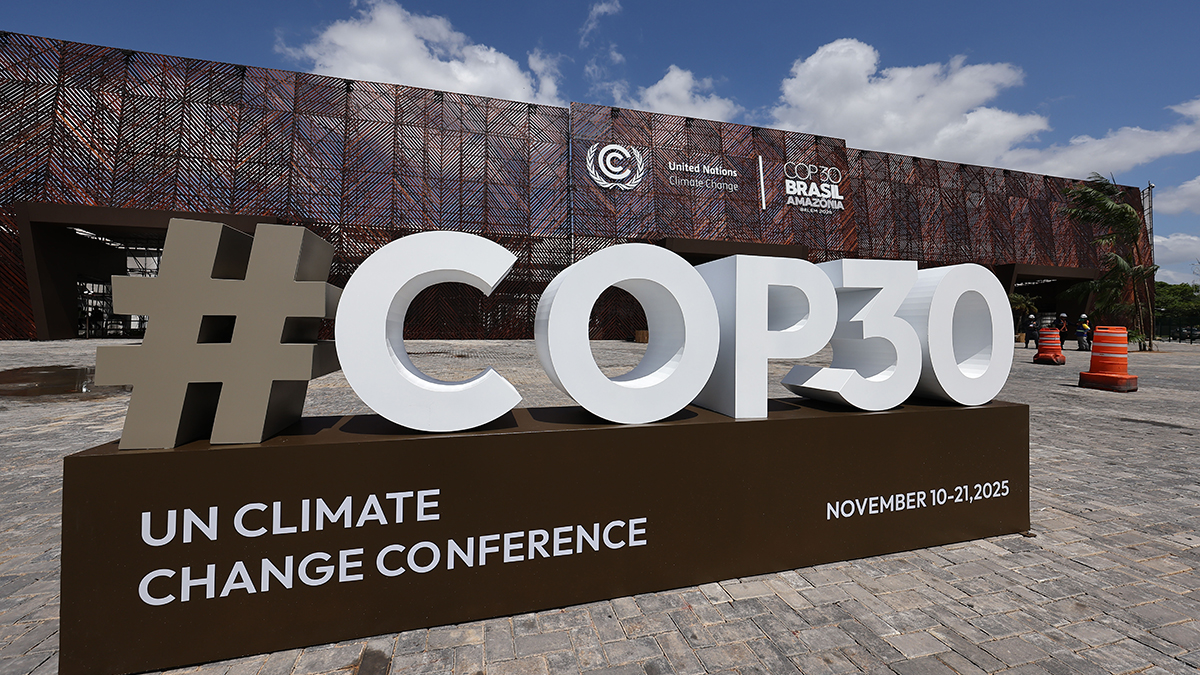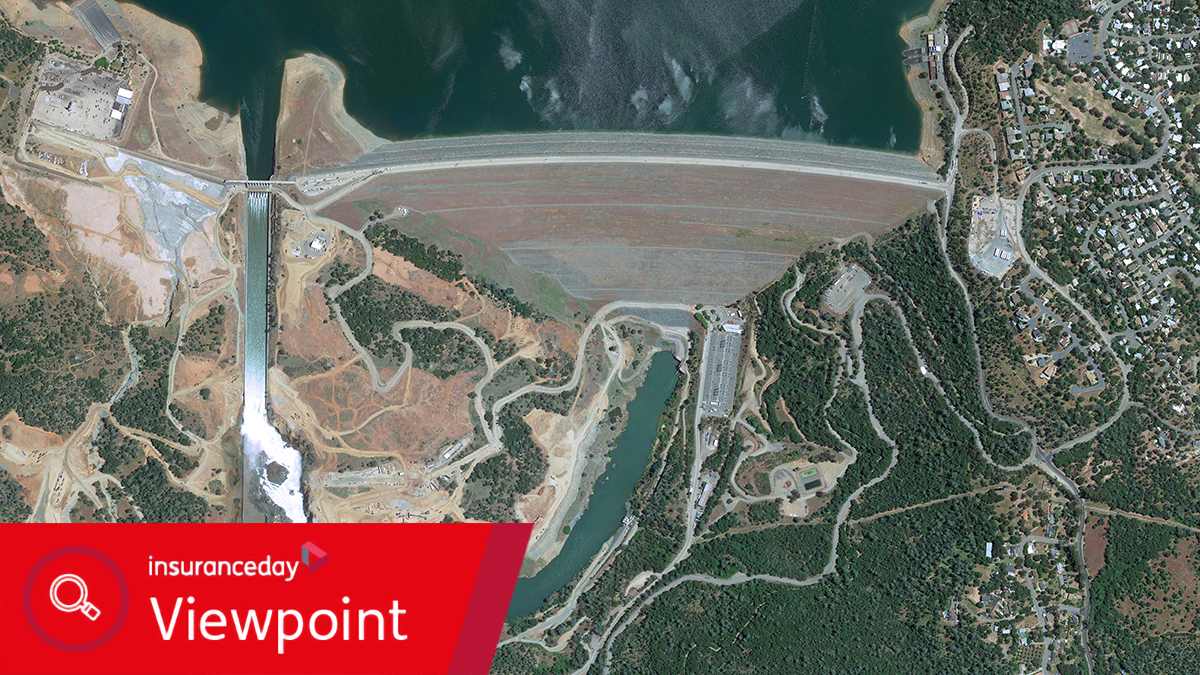Climate change demands a whole-of-society approach: Bacani
The COP30 Global Sustainable Insurance Summit will reaffirm the sector’s role as society’s risk manager, UNEP’s head of insurance, Butch Bacani, says
United Nations Environment Programme’s head of insurance describes how the House of Insurance at the climate talks in Belém will stand as a symbol of inclusiveness, resilience, sustainability, and hope
The climate talks that get under way in Brazil this week could enhance the role of insurers as never before, according to the head of insurance at the United Nations Environment Programme (UNEP), Butch Bacani.
The COP30 Global Sustainable Insurance Summit convened by UNEP and the Brazilian Insurance Confederation (CNseg) will, among others, present the multistakeholder approach adopted by the UNEP Forum for Insurance Transition (FIT), which Bacani chairs.
In an interview with Insurance Day before he set off for the Amazonian city of Belém from the UN’s European headquarters in Geneva, Bacani stresses that the ultimate goal of FIT is to facilitate a whole-of-society response to climate change.
This ambition is even more important, given the UN secretary-general’s concern the world will miss the 1.5°C limit enshrined in the Paris Agreement. António Guterres said at the opening session of COP30 that even a temporary overshoot of this temperature limit would have dramatic consequences for people, prosperity, and the planet.
“For sure there will be a greater sense of urgency, because we know that every fraction of a degree of warming would equate to x number of lives, livelihoods and assets being lost,” Bacani says.
“The warmer the temperature becomes, the more consequential the impacts would be. That means the sense of urgency and scale is important, and that’s why having a whole-of-society approach is so important,” he adds.
This means managing the entire “spectrum” of climate risk – from reducing emissions as the root cause of global warming, to reducing the physical impacts that are, increasingly, becoming more frequent and severe. It also means preparing for “residual risk”, he says, where risk-sharing solutions, including insurance, come into the picture.
The COP30 Global Sustainable Insurance Summit will take place at the Casa do Seguro (House of Insurance). Convened by UNEP in collaboration with CNseg, it will showcase insurance industry leadership in tackling climate change, nature loss, and the protection gap. The programme includes: Insurability, Inclusion & Resilience Day on November 10; Net-Zero, Nature-Positive & Just Transition Day on November 15; and Latin American Leadership & COP31 Day on November 21.
FIT for purpose
FIT has issued its call for a whole-of-society approach to climate risk in a communiqué to COP30, in which it recommends the creation of an International Taskforce on Climate Resilience and Transition Insurance. Given the progress FIT has made since its launch in April 2024, Bacani has confidence in what such a taskforce could achieve.
FIT is a multi-stakeholder forum, convened and led by the UN, which brings together insurers, regulators, civil society, academia, and others. FIT’s inaugural report, Closing the Gap, was launched at COP29 in Baku, Azerbaijan.
FIT’s four initial priorities were: advancing frameworks for net-zero insurance metrics and voluntary targets and developing new net-zero insurance concepts; developing transition plan guidance for insurance market participants; engaging with the real economy on the development of transition plans by corporates across different sectors; and tackling challenges and opportunities to develop insurance solutions and taxonomies that would support the transition.
To ensure FIT delivered “high impact, high quality outputs”, Bacani says the “priority of priorities” was identified as having a transition plan agenda in line with the global trend towards connecting public and private sector efforts to drive financial flows towards a sustainable transition.
Bacani notes most of the frameworks have focused on the real economy and other parts of the financial sector. Rather than duplicate them, FIT has instead built on the work of, for example, the UK’s Transition Plan Taskforce (TPT). Last year, the International Financial Reporting Standards Foundation announced that it will assume responsibility for the disclosure-specific materials developed by the TPT, marking an important milestone in the creation of global norms for transition plan disclosure.
“The TPT framework is already applicable to financial institutions, including insurance companies, but the sector guidance they’ve produced only covers asset owners, asset managers, and also lending,” Bacani notes. “And so, FIT created the first global guide on transition plans specific to the insurance business, and I’m pleased to say that Closing the Gap has been the most downloaded publication at the UNEP Finance Initiative over the past 12 months.”
As well as address the “peculiarities” of insurers, reinsurers, brokers, and their different lines of business, FIT’s guide also highlights the topic of proportionality. “Not everyone is a big, highly diversified global insurer or reinsurer,” Bacani stresses.
He adds that many insurers have a lot of small and medium-sized enterprises (SMEs) in their portfolios for which quality data is not readily available, and many insurers in developing countries have limited resources that would likely require a phased approach to transition planning.
The guide also articulated the importance of “wiring in” climate-related, interconnected sustainability issues.
Bacani explains: “While the initial thrust on transition planning generally had an overarching focus on decarbonisation, that narrative for the FIT quickly evolved to say we need to make sure that the transition is also climate resilient and socially just.
“And as part of that narrative, it was important for us to link other relevant sustainability issues like protecting and restoring nature and biodiversity, because ecosystem-based adaptation and disaster risk reduction are also an integral part of the resilience agenda, aside from ecosystems being carbon sinks.”
FIT launched Underwriting the Transition – the first-of-its-kind transition plan guide tailored for insurance and reinsurance underwriting portfolios – in July this year at the inaugural FIT Transition Insurance Summit hosted by the European Insurance and Occupational Pensions Authority in Frankfurt, Germany. It is currently on track to outpace the first FIT transition plan guide as the most downloaded UNEP Finance Initiative publication over the past year.
This, FIT’s second guide, is a “deep dive” into transitioning planning for underwriting portfolios. “We know that many insurers are just starting their transition plan journey; that many have started from an investment, rather than an underwriting point of view,” Bacani says.
At COP30, FIT will unveil its third and latest guide, which Bacani says presents “total balance sheet principles” for transition planning that will strategically unify the underwriting and investment portfolios of insurance companies, establishing a foundational vision for what constitutes a credible and coherent transition plan.
“The idea is, how do you achieve cognitive consonance through a single enterprise-wide framework with a shared logic and coherent approach towards transition planning, spanning both sides of the balance sheet,” Bacani says.
“It doesn’t mean that everything will be identical,” he continues. “That’s not the intention because, ultimately, insurance underwriting is a very different part of finance compared to investment management, and there are various approaches and levers to support the transition. So, while we are looking at coherence, the outcomes could be different approaches. The most important thing, is that those differences are well governed and intentional, rather than negligent or inadvertent.”
Taskforce mandate
FIT’s clarion call for a multi-stakeholder international taskforce to address climate risk is strongly supported by Laurence Tubiana, who is one of the architects of the Paris Agreement, the special envoy to Europe of the COP30 presidency, and the president and chief executive of the European Climate Foundation. FIT’s communiqué “sends a powerful signal”, Tubiana says, that reducing climate risk and improving insurability require a systematic response – “one that bridges insurance, finance, policy, the real economy and society”.
FIT is a “microcosm” of that taskforce, Bacani says, and there are other stakeholders who are important to the discussion but who are not part of FIT.
He explains: “We wanted to bring the idea of a multistakeholder taskforce on climate resilience and transition insurance, because we think that addressing climate risk and improving insurability and ultimately building resilient communities and economies would require a whole-of-society approach, rather than siloed approaches whereby efforts by the public sector, insurance industry, civil society and others are uncoordinated and therefore less effective and impactful.”
He adds: “It means bringing the different stakeholders together with a shared vision of who does what and how it can be done in a more systematic way.” For that reason, Bacani’s team will be promoting FIT’s communiqué at COP30 not only in the House of Insurance but also in the Blue Zone – the area of the UN’s climate talks where formal negotiations and high-level meetings take place.
“We don’t know yet who would lead the taskforce because we first want to see whether this idea could permeate the policy process,” Bacani says, adding that the goal is to “get a mandate” from the wide variety of participants at COP30. There is no “preconceived model” for the proposed taskforce, he continues, but the main point is that the risk manager, risk carrier, and investor roles and capabilities of the insurance industry are a core part of building climate resilience and accelerating the transition to net zero.
Nature-positive insurance
As well as chairing FIT, Bacani also leads UNEP’s other core insurance initiative, the Principles for Sustainable Insurance (PSI), which he conceptualised, and was launched at the 2012 UN Conference on Sustainable Development in Rio de Janeiro, Brazil. PSI and FIT have different structures and are governed separately and independently of each other.
The largest initiative between the UN and the global insurance industry, with close to 300 members from around the world, the PSI has been addressing nature-related risks and opportunities since its launch, Bacani says.
The PSI has worked on a range of topics including illegal, unreported and unregulated fishing; environmental pollution liability; natural world heritage sites; and nature-based solutions to climate change. PSI’s endeavours were then “formalised and systematised” last year via a PSI working group for nature that has a portfolio-wide approach to nature-related dependencies, impacts, risks, and opportunities in the context of underwriting portfolios.
In December last year, that working group published the first global guide for insurers on setting priority actions for nature – Insuring a resilient nature-positive future.
“If you are an insurance company and you haven’t started your nature journey and have not systematically assessed this sustainability issue within your company, then this guide is a starting point for you,” Bacani says, “on how you can set priority actions depending on materiality and the lines of business that you write.”
At London Climate Action Week in June this year, the working group published Rooted in Risk, the first report in its Nature Uncovered for Insurers series. “Some insurers have already told us that, solely thanks to that guide, they have been able to perform the first ever nature-related assessment of their underwriting portfolio, which is great,” Bacani says.
The second report in the series was launched last month at UNEP Finance Initiative’s European Roundtable on Sustainable Finance. Breaking Ground gives practical examples of how to perform a nature-related assessment of dependencies, impacts, risks, and opportunities in the underwriting portfolios.
“It’s been very sequential,” Bacani says, “and the next phase of nature work would be how to embed nature into risk management and underwriting frameworks within an insurance business.”
The launchpad for that leap is an awareness of the relevance of nature to an insurer. “Once you’ve started to understand its relevance and assessed its materiality, then you can look into that next phase, of embedding nature into core risk management and underwriting processes,” Bacani says.
Innovative insurance
Bacani established UNEP’s partnership with the Vulnerable Twenty Group of Ministers of Finance (V20) – originally 20 and now more than 70 of the most climate-vulnerable countries in the Global South – and conceptualised the V20 Sustainable Insurance Facility (V20-SIF) to enhance the climate-resilience of micro, small and medium-sized enterprises (MSMEs) – the economic backbone of many developing countries. He describes the “soft launch” at COP30 of a forthcoming report from the facility.
The report is a “landscape study on climate-smart financial services for MSMEs in the Global South,” Bacani says, adding that MSMEs are the “forgotten middle” in climate change debates.
He explains: “There are schemes in the Global South for regional insurance pools, and there's been a lot of experimentation over the years at the household level, for example, with microinsurance products and solutions. If you look at the economies in developing countries, many of them are made up of MSMEs, and so they are vulnerable to what we call a ‘double whammy’, because once they’re hit by a climate shock, there’s an impact on their income on the one hand, and on their ability to access credit and favourable repayment terms on the other.”
The V20-SIF study, therefore, describes the needs of MSMEs and suggests ways to address those needs to help these enterprises become more climate resilient.
“Our V20-SIF project has a different theory of change compared with other insurance solutions out there, many of which are donor-funded solutions,” Bacani says. “The donor funding serves a specific purpose, usually to subsidise the insurance premium, but this may be challenging going forward in terms of how sustainable a solution is, especially if there’s pressure for donor funding to go elsewhere,” he adds.
The different “theory of change” means aggregating demand for insurance and sustaining that – along with advancing loss prevention and risk reduction measures for MSMEs – through “demand aggregators” like banks and microfinance institutions (MFIs) which provide working capital and loans to MSMEs.
“Those banks would have a real interest in making sure that MSMEs are climate resilient, because it means MSMEs would be more capable of paying back their loans. And the banks could also benefit from having an insurance solution for, say, the accumulated catastrophe risk exposure of their MSME loan portfolios,” Bacani says.
“A lot of that will be unpacked at our COP30 summit as building climate resilience is a key priority for UNEP, in addition to accelerating and scaling up the net-zero and nature-positive transition,” he concludes.
A livestream of the COP30 Global Sustainable Insurance Summit can be viewed here.




